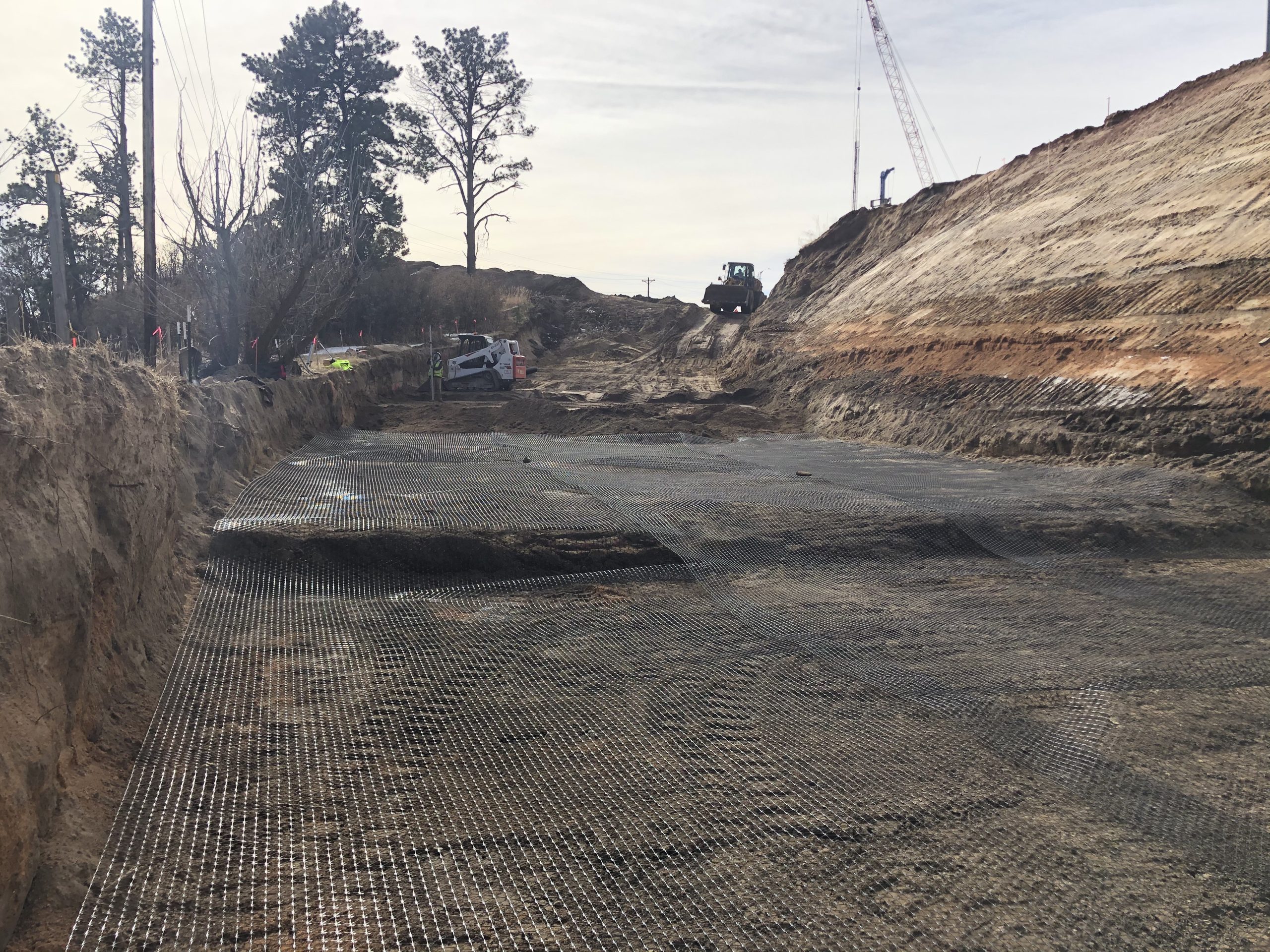
Geogrids
Geogrids are materials whose function is to be used to increase performance, reduce costs, and deliver measurable results through their use in soil structures. Stable Earth can help determine the right solution to the problem on your project.
Geogrids come in many shapes and materials. Stable Earth utilizes uniaxial, biaxial, and multi-axial grids to support loads on soil structures that would otherwise fail without the support. Geogrids can also reduce the amount of work and time spent solving site problems compared to traditional options. They work through a variety of mechanisms, including stabilizing aggregate or resisting earth pressures to support a soil mass, a building, or a trafficked right of way.
The uniaxial form (high tensile capacity ribs in one direction) and biaxial form (ribs in two directions) were introduced in the early 1980s and over time became the trusted and proven products for many civil and geotechnical applications. The biaxial form can be a punched and drawn polypropylene (PP) geogrid or a woven and coated polyester (PET) yarn. More recently, multi-axial geogrids have been developed that have a unique aperture shape and structure to provide unparalleled benefits when combined with an aggregate base course.
Uniaxial
Uniaxial geogrids are geogrids that have tensile strength in one direction, following the orientation of the main ribs. They come in two styles: high-density polyethylene (HDPE) and polyester (PET). They are primarily used in steepened slopes and mechanically stabilized earth (MSE) walls.
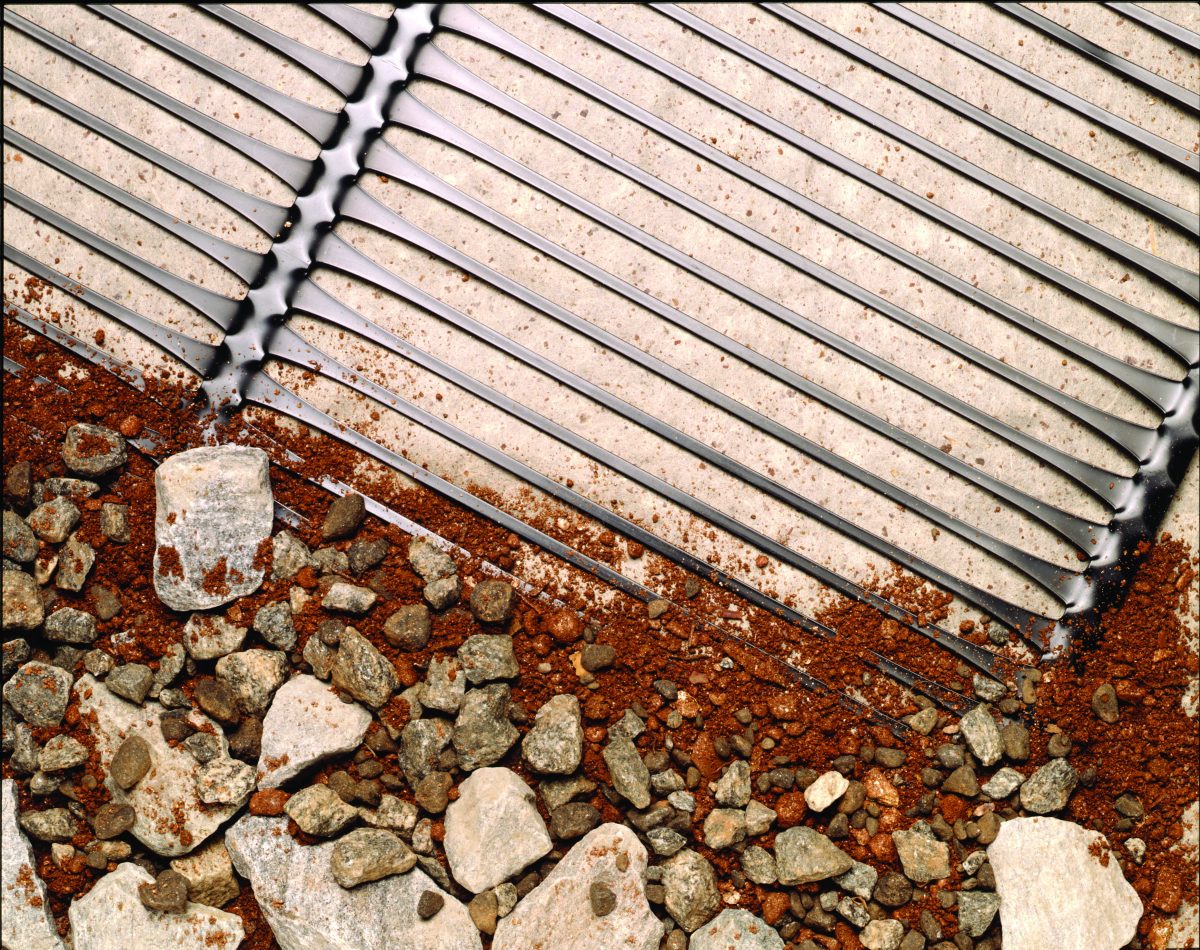
HDPE Geogrid
High Density Polyethylene (HDPE) uniaxial (UX) geogrids can carry high tensile loads applied in one direction (along the roll length) and are highly-resistant to environmental degradation.
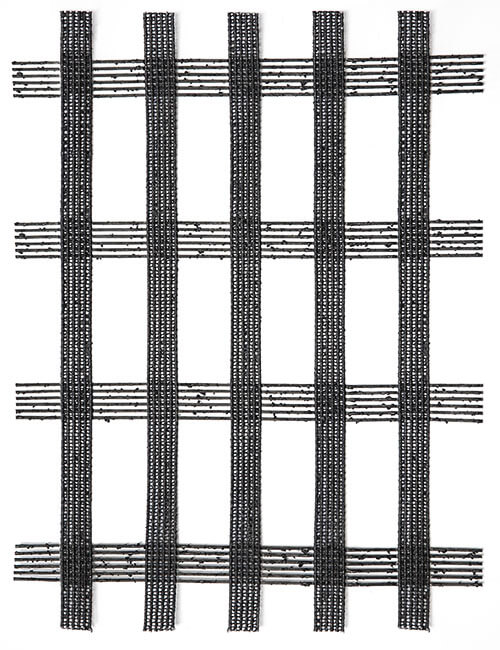
Polyester Geogrid
Polyester (PET) geogrid is composed of high molecular weight, high tenacity polyester multifilament yarns are woven in tension and finished with a PVC coating.
Biaxial
Biaxial (BX) geogrid is Tensar’s original geogrid invention. Since the 1980’s, Tensar BX geogrids have been used for mechanical ground stabilization in over half a million projects worldwide.
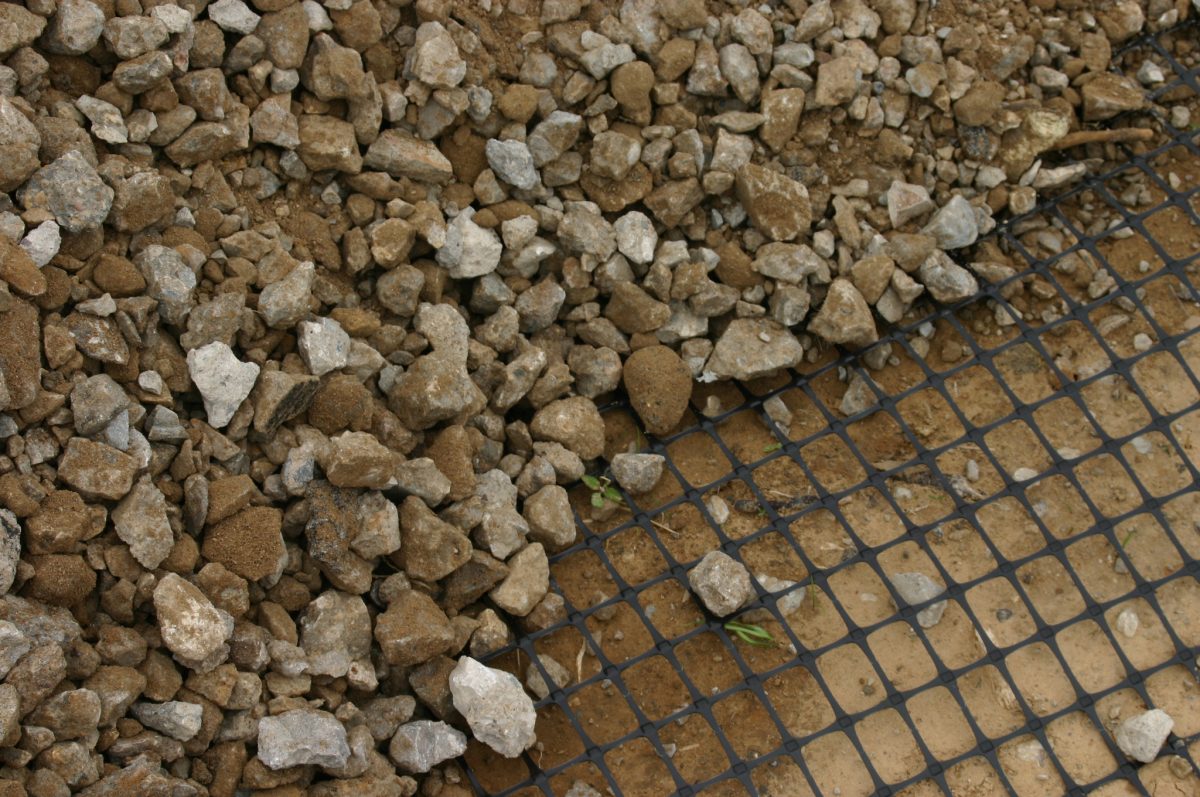
Biaxial Geogrid
Multi-axial
Multi-axial geogrids provide better performance than their biaxial counterparts due to their taller ribs and unique aperture geometries, both of which promote better interaction with the stabilized soil.
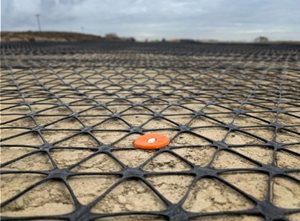
TriAx Geogrid
Tensar TriAx® geogrid has helped contractors and pavement engineers around the world stabilize soft soils and optimize pavement designs to get longer service life for their budget.
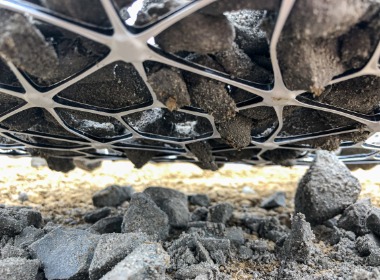
InterAx Geogrid
InterAx™ geogrid combines coextrusion and advanced material science with an optimized geometry to dramatically improve soil interaction and trafficking performance.